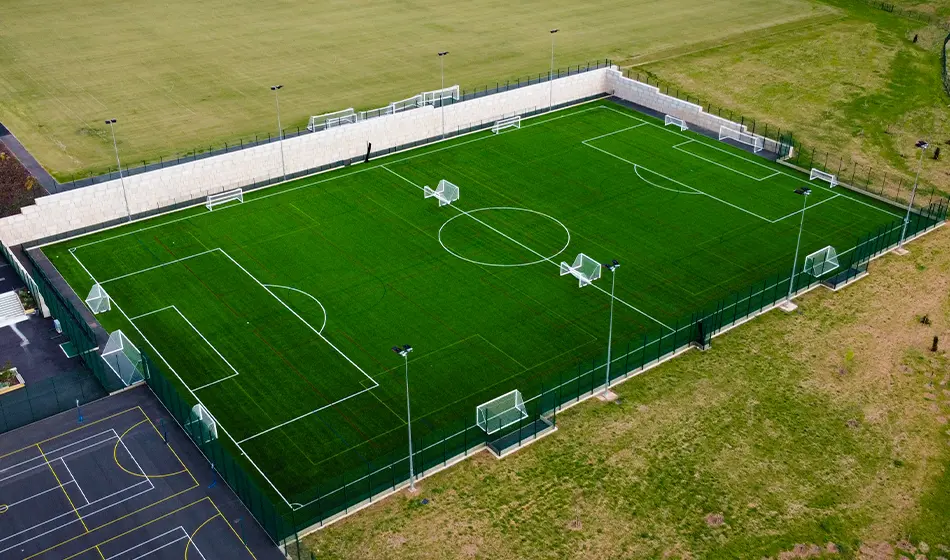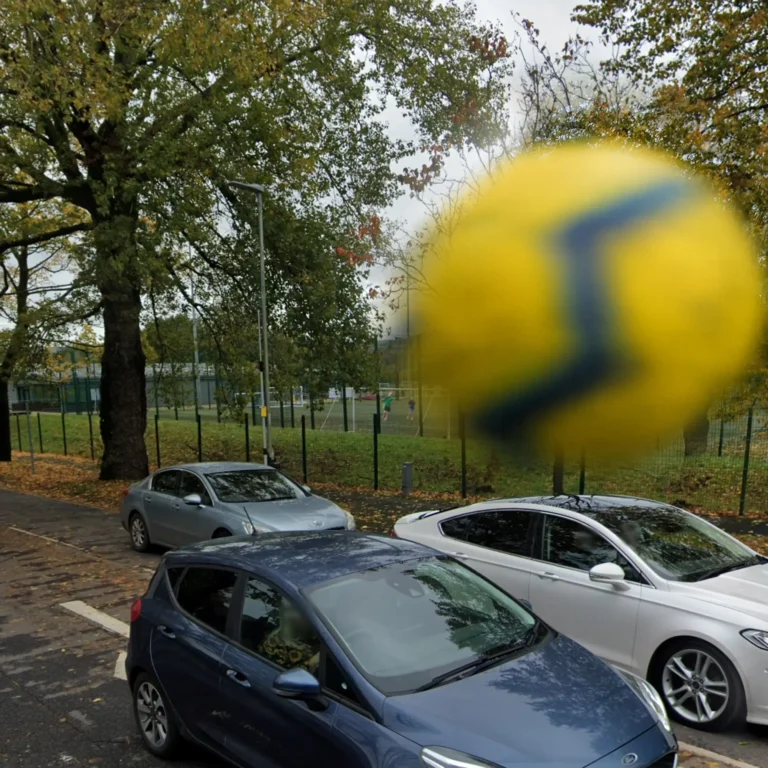Fun and accessible casual Football appeals
Casual football is a quick, low-pressure way to play. Games are typically just 60 minutes long and run on local astroturf pitches. There’s no long-term commitments and anyone can turn up and join in. This flexibility breaks down barriers that stop many people from exercising. For example, nearly 30% of gym members quit because it’s “too expensive” and 15% cite “no time”. By contrast, low-cost casual games fit around busy lives. Many players say a weekly football game becomes ‘my mental escape’. Many players see it as a chance to meet friends, switch off, and stay active in a welcoming setting.
Sessions are short and flexible which makes them easy to fit around work or family. They are informal and uncompetitive, with no referees and open to everyone from beginners to ex-professionals. Games are easy to find through apps like Footy Addicts, which list thousands of local matches that anyone can join with a click. Footy Addicts alone records 26,000 active players each month and more than 4,500 casual games across major UK cities.
These features create a social, grassroots atmosphere. People meet as equals and often invite friends or colleagues so games quickly grow by word-of-mouth. As one Football for All study noted, once a few people start playing in an area, ‘more join’ and each game becomes a community event. Participants often say that chatting before and after games and seeing familiar faces is just as valuable as the exercise itself. In short, casual football offers fun and fitness together, which is why it has exploded in popularity.

Unmatched small-sided Football demand and growth
Venues across the UK are feeling the surge. In major cities and towns, small-sided football is booming. League operators and county FAs note that more adults play 5-a-side and 7-a-side than ever before. Indeed, small-sided football is the most popular and fastest-growing area of adult football. This trend is especially pronounced in bigger cities. Hundreds of weekly after-work leagues run in London, Manchester, Birmingham and Glasgow. The format became even more popular through the creation of the Baller League, a competition that formalised casual games and attracted a larger following.
Women’s football is also growing rapidly and within that segment 5-a-side is the fastest-growing format simply because it is so accessible. One of the goals of Football for All’s Women’s Football programme is to organise a weekly women-only session in every major UK city.
Many factors drive this growth. Surveys show that people want simple, bite-sized activities. For example, a women’s sport campaign highlighted that fear of judgement and confidence issues drive many potential players away from school or elite sports. Casual football solves this by being inclusive. Nobody is graded or bench-warmed in an open game. Mixed-gender sessions also boost uptake. Football for All runs separate women-only games as well as co-ed matches to make everyone comfortable.
At the facility level, demand has rapidly outstripped supply. Most local councils report “not enough” all-weather football pitches. In one survey, 96% of English councils said they lack sufficient 3G/4G football pitches to meet demand. This shortage means every new astro-turf pitch is overbooked within weeks. To meet this need, government and governing bodies are investing heavily in infrastructure. In 2025 the UK government announced £100 million for new and improved community sports facilities (many of which will be 3G football pitches). The Scottish FA’s “Pitching In” campaign is also raising £50 million for local football grounds. These large-scale investments recognise that football (especially casual football) is where community demand is highest, so upgrading pitches yields huge participation returns.
Health, social and economic impact
The rise of casual football carries major community benefits. Sport England’s research underlines that community sport generates massive social value. Their latest model estimates the annual social value of community sport and physical activity at over £107 billion, with a £4.20 return on every £1 invested. Grassroots football contributes a substantial share of this. The FA’s Social Return on Investment (SROI) report calculates that 15.7 million football players in England deliver £11.8 billion of value to society plus £3.2 billion in NHS savings by preventing disease. Put simply, each casual game creates healthier, happier people who require less medical care.
Specifically, football’s social nature boosts wellbeing. Team sport has been shown to improve mental health by building routine, connection and confidence. For example, weekly games create friendships and fight loneliness. Players from all backgrounds report that their casual groups become like social support networks. As a psychiatrist noted in a community football case study, group games offer the benefits of therapy ‘organically, through play’. Indeed, research presented to Parliament emphasises that ‘over two million people play football every week in 110,000 teams and 29,000 clubs’ across the UK, showing how embedded it is in society. This is before even considering the millions of casual games that slip under the radar.
For funders and planners, the message is clear. Investment in casual and recreational football has proven payoffs. Every new football player created is like a drop in the pool of health and social returns. Communities with accessible drop-in games see improved physical activity rates, community cohesion and even crime reduction. In short, casual football delivers on public health and social goals far more cost-effectively than many alternatives.
Benefits for venues and funders
Casual football can become a reliable revenue stream and a community service. Facilities often have unused slots (weekday evenings and weekends) that adult groups want. By partnering with nonprofits like Football for All, venues fill these slots. We currently work with nearly 200 venues across the UK. In 2025 alone we launched 40 new weekly games with local partners, instantly adding dozens of active people per venue.
By offering community rates or loyalty discounts to groups like Football for All, managers attract regular weekly bookings from underrepresented groups and meet their social responsibility goals. Casual football brings in people who might not join club teams. Women, new city residents and those who left school long ago often flock to drop-in games. This broadens a venue’s customer base.
This is far more reliable than a one-off random booking or a gym membership that might drop off. In many cases, venues report that organised recreational football simply ‘fill in evenings’ without extra marketing effort. Community projects like Football for All promotes healthy lifestyle and reinvests all fees locally. Even help develop local leadership by offering volunteer positions to help run sessions. Venues simply provide the space, so the cost of putting on games is minimal. In return, venues build goodwill and community profile.
Message to funders and planners
The casual football boom aligns closely with public health and social objectives, so it merits targeted support. Sport England and government data show football is the number-one sport across all ages, incomes and ethnic groups. Yet participation stalls unless facilities and programmes match demand. Planners should use this evidence to direct funding. Football-specific projects should be given priority. Multi-use courts are often left empty because footballers prefer to play on proper turf.
At present, 96% of councils do not have enough full-size or small-sided football pitches, so investing in new artificial grass surfaces would make an immediate difference. A recent survey found that the biggest barrier to participation is poor quality pitches. Funding venues that support casual formats, from five-a-side to ten-a-side, is likely to encourage far more participation than building another concrete multi-use games area.

Inclusive programmes also need support. Grants and planning rules should encourage partnerships with community providers. The Football Foundation and FA programmes already target under-represented groups and areas. One simple example is to require developers’ contributions to fund an astro pitch. This could double local access. Public funders such as the National Lottery have long supported grassroots sport, but there is now a need to direct more funding towards recreational football and organisations that can get people active without heavy bureaucracy.
Investment decisions should also be guided by the strong return on investment. In England, the adult grassroots game saves an estimated £43 million a year for the NHS and generates over £10.7 billion in total economic value, including social well-being. Funding community football is therefore a clear and cost-effective use of public money.
Sources: Participation and growth figures are drawn from FA and Sport England reports, as well as Football for All and Footy Addicts data. Social impact and investment returns are from Sport England and FA analyses. Gym and dropout stats are from fitness industry surveys. Data on councils and facilities comes from recent UK government and football foundation publications. All citations refer to the latest available evidence.


